Tlingit
The Dakhkà Khwaàn Dancers are gathered outside in the hall of the Kwanlin Dün Cultural Centre, dressed in their regalia. Their drums, made with a moose hide and painted with motifs whose century-old designs, quiver with hypnotizing resonance every time the padded stick hits them. Their moose leather moccasins, embroidered with thousands of multicolored beads – all sewed by hand, one by one, are adorned with fluffy hare fur that whoosh with each move. From their cedar hats, several small snow ermine pelts hang loose and create a bright white streak when moved rapidly. Around their knees and at the bottom of their robes or button blankets, long fringes dance like the leaves on a Peking Willow, shoved around by a fierce wind, giving a whirlwind optic illusion. Singing in their native tongue, they announce to the waiting crowd that the ceremony is about to begin and beat their drums like the stomping hooves of a herd of caribou. In a long crescendo, the rumble grows louder and louder, like an approaching storm. The percussions turn into the roar of thunder pounding its way through. Their singing cracks through the atmosphere like lightning. The walls might be vibrating and the ground might be shaking, but the crowd of First Nation people waiting inside the great hall knows this is no regular storm; it is a storm of change, the return of a long lost tradition. This is their cultural phoenix reclaiming its legacy, its place, as the pillar of their ancestral identity. The crowd is ecstatic. It is time to celebrate!
A Fortunate Encounter
I met Marilyn Jensen, the leader of the dance group last May in Montreal, during the International Polar Year Conference. They had just performed, leaving me mesmerized and with so many questions that I had to meet them and find out more. Although we talked at length about their performance and today’s struggles and challenges for the indigenous communities of Canada, called First Nations, it was our mutual love of folkloric art and my fascination for Native mythology that bonded us.

From the Inland Tlingit and Tagish Nations, Marilyn was born in Whitehorse, Yukon, in Northern Canada. Her village, Carcross, whose name stands for Caribou Crossing, is known for its 4,500-year-old aboriginal artifacts that were found some years ago. Her clan, the Dakl’ aweidi, an ancestral name that means “People of the Black Sands”, belongs to the Wolf/Eagle moiety (one of two groups within a culture). The Dakla’weidi crest is the Killerwhale. With a B.A. in Anthropology from the University of Alaska and a Masters in Indigenous Governance from the University of Victoria in Canada, Marilyn worked for the Carcross/Tagish First Nation and the Council for Yukon First Nations. Today, beside teaching Indigenous Governance at the Yukon College, she dances, manages and is the group leader for the Dakhka Khwaan Dancers.
Her mother, Doris McClain is the matriarch of her lineage and former Chief of the Carcross/Tagish First Nation. It is no surprise that Marilyn is a key player in her community’s cultural revival. Her mother started a dance group back in the 1970‘s, where her own children danced. For several decades, she was extremely active and vocal on the necessity for her people to preserve, honor and recapture their ancestral heritage. Now it is Marilyn who is carrying on her mother’s work, fulfilling a dream that has been in the works for many years. To say that courage, strength, and dedication runs within the family is an understatement. These women are empowered with an energy that defies any norms, as if through them, their ancestors were channeling their powers and making them heralds for the return of the lost Inland Tlingit identity.
A couple of weeks after our encounter, she contacted me telling me that there was to be a very special and historical event coming up in Whitehorse. Trust me she said, “You definitely don’t want to miss it!” The event in question was the re-raising of the Dakl’ aweidi Keét Hít (Killerwhale House), which had been burned by the Anglicans over one hundred years ago. It was to be a milestone in the revitalization of the Inland Tlingit/Tagish community, something almost unheard of. The occasion was so unique that several Tlingit chiefs from the Alaska coast were traveling to attend it, reigniting a long-lost tribal custom. In the old days, traveling long distances to visit other clans was not only common but necessary for maintaining good relationships and trade deals. But when the territorial border between Canada and the United States of America along the pacific northwest coast of America was created, the Tlingit territory was literally cut in two, making any communication or movement between the Inland and Coastal Tlingit a challenge.
To be invited at a historical cultural ceremony was not to be taken lightly, so it was important for me to find out more about Marilyn’s past, her clan, about the Tlingit and why this event was so special.
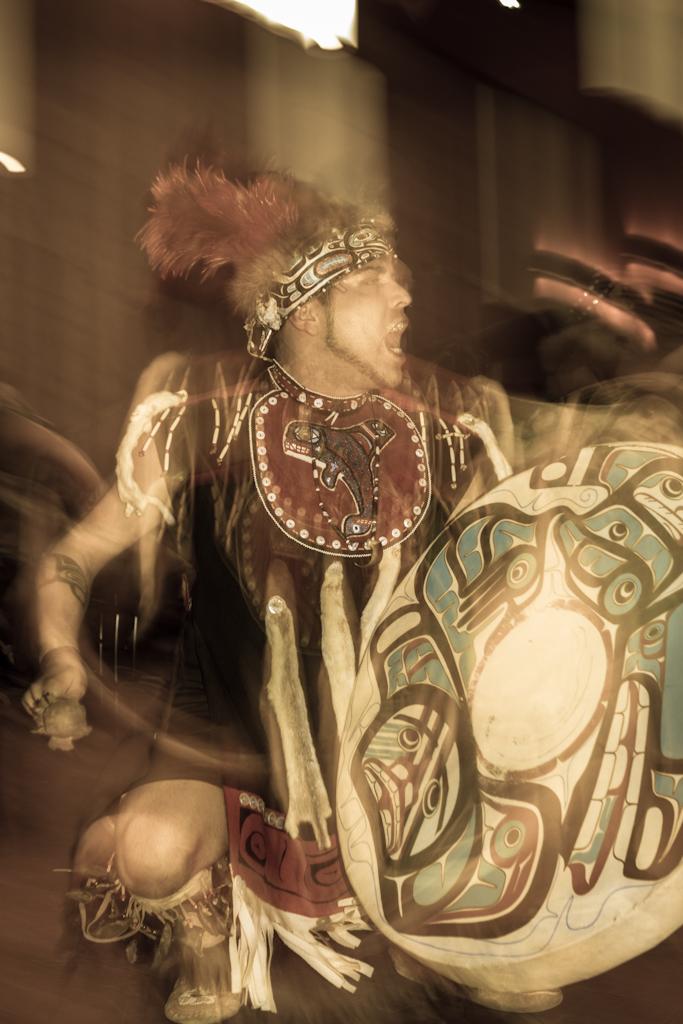
To Be Conquered
Famous anthropologist Wade Davis once said: “Cultural survival is not about preservation, sequestering indigenous peoples in enclaves like some sort of zoological specimens. Change itself does note destroy a culture. All societies are constantly evolving. Indeed a culture survives when it has enough confidence in its past and enough say in its future to maintain its spirit and essence through all the changes it will inevitably undergo.”
It is hard to imagine what assimilation means when you stand on the side of the perpetrator, when your people are the ones who conquered and took over new worlds. What is it like to loose your cultural identity? To be forbidden to practice and honor rituals that were passed down through many generations. What does it do to your spirit when you find yourself stripped of all liberties and possessions and outlawed to live the way you lived only yesterday?
How would we, dear modern citizens of this world, react if what we took for granted, what we called “Our World” and “Our Rights”, were taken away from us? Surely we would fight. Surely we would defend ourselves. Confronting this new and challenging situation we might even find added value and turn it all around, giving it a positive twist. God knows that this nation of builders and fighters has what it takes to do so. Our optimism, and Hollywood, love to believe that our ability to overcome the impossible ultimately always triumphs – aren’t we a society of winners? In reality, history has many more losers than winners and in the end, against a force that is simply too great to resist, would we accept assimilation for the sake of survival? Or would we go down in blazing glory and take our pride to the grave?
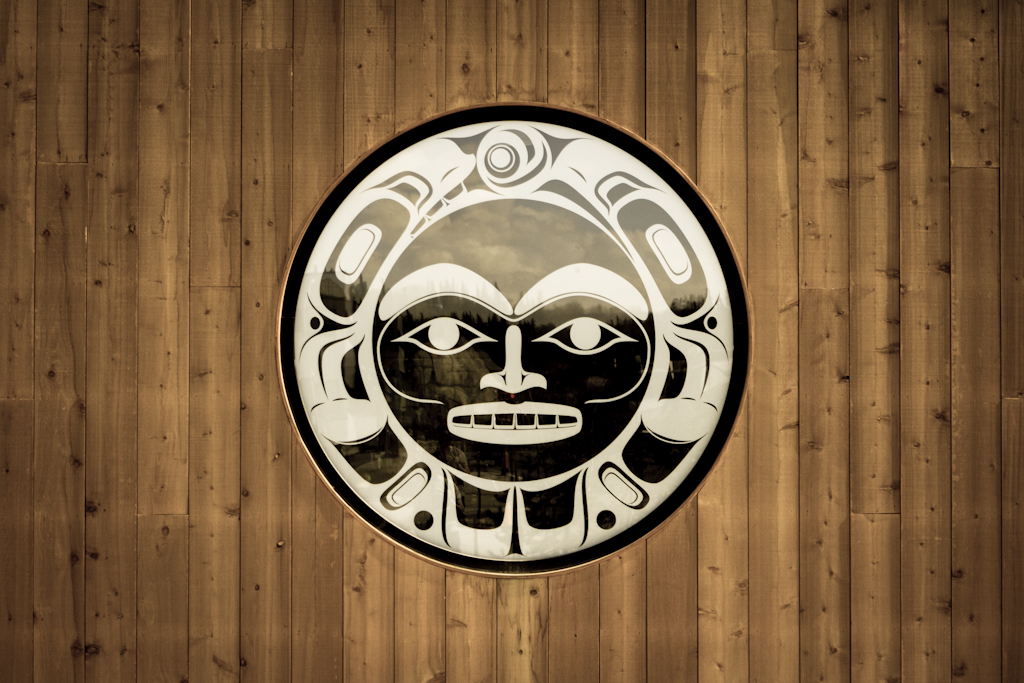
In America, for thousands of years, indigenous societies lived in a relatively constant environment. Life was of course not easy – survival is a strenuous task and nature is unforgiving, but overall, their world was a stable reality in which one only needed to find a safe way to eat and a safe place to sleep. When the Europeans arrived, and officially terminating what anthropologists refer to as the Pre-Columbian Era, everything changed.
Colonization is a positive term that explains the process of a group of individuals taking possession of a new place. Although our semantic and politically correct system indicates otherwise, the truth is that when that place is already occupied by a different group, colonization turns into conquest. Our righteousness with history is so deeply rooted that on Wikipedia, the word “Conquest” is mainly associated with military subjugation, with no mention of the assimilation of the indigenous North Americans. In fact, when talking about “Conquering America” we allude to the Spanish invasion and the disappearance of the Aztec-, Inca- and Mayan empires. But when we talk about the Apache, the Navajo, the Tlingit, the Iroquois, the Cherokee, the Cree, the Inuit, the Sioux, the Blackfeet, or the Comanche, we then choose to refer to the colonization of North America. Our literature might fool us into thinking that what happened was for the good of everyone, but the truth remains, for the Native Americans, the Europeans conquered their territories and forced them to assimilate by taking away their culture, livelihood, and self determination. Over the course of the several hundred of years, the indigenous peoples saw their numbers decimated by wars and diseases and their land possessions dwindle to a fraction of what they were, while their culture became outlawed and gradually disappeared.
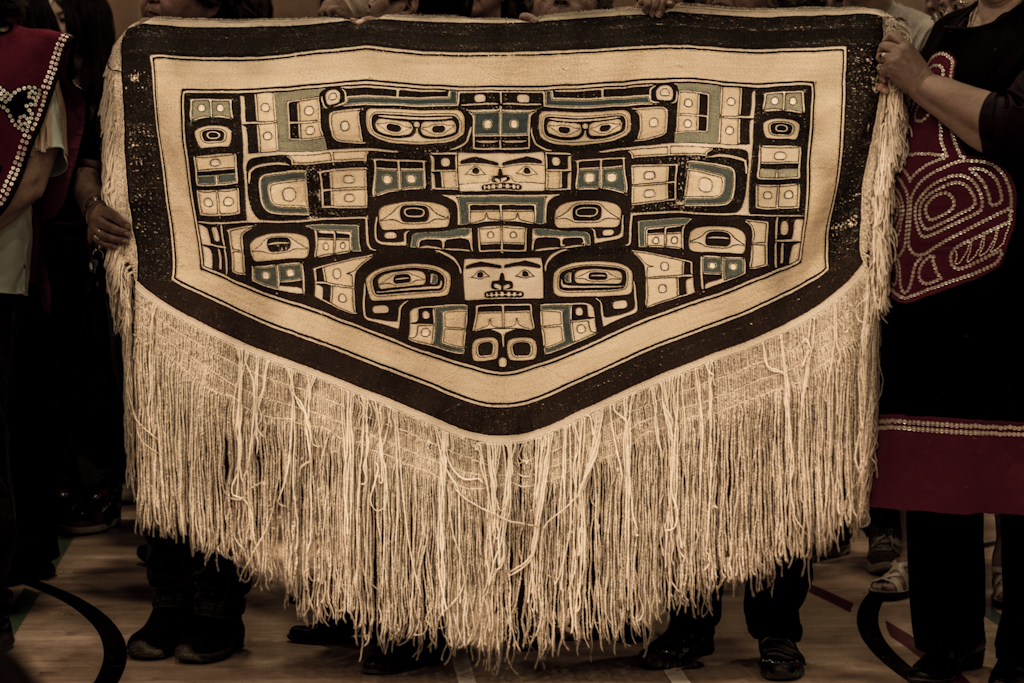
In Canada, this process culminated with the Gradual Civilization Act of 1857 and the Gradual Enfranchisement Act of 1869. These bills made it mandatory for indigenous people to fall in line with the system. The bills came to be known as the “Enfranchisement of the Indians”. To be enfranchised, any “Indian” over twenty-one years of age, had to speak, read and write either English or French, be well educated, of good moral character and free of debt if they were to receive “a piece of land not exceeding fifty acres out of the lands reserved or set apart for the use of his tribe, as allotted by the Superintendent General of Indian Affairs, and a sum of money equal to the principal of his share of the annuities and other yearly revenues receivable by or for the use of such tribe”. Incredible since under such rules, half of the Europeans would have not even qualify for anything!
All enfranchised “Canadians” were required to choose a new surname that needed to be approved by appointed commissioners, by which they would become legally known. The wife and descendants of the enfranchised man would also be enfranchised, and would no longer be considered members of the former tribe. Finally, in 1876, the Federal Government of Canada passed the Indian Act, stripping the indigenous people of any rights over how to handle their lives and giving Canada exclusive authority to legislate in relation to “Indians and Land Reserved for Indians”.
The assault on the First Nations’ cultural heritage didn’t stop there. In a letter to the Prime Minister Sir John A. MacDonald on the 27th of October 1879, Indian Reserve Commissioner Gilbert Malcolm Sproat reported that the potlatch, an indigenous cultural ceremony, was:
“… the parent of numerous vices, which eat out the heart of the people. It produces indigence, thriftlessness, and habits of roaming about which prevent home association and is inconsistent with all progress. The potlatch directly causes a large amount of prostitution common among the Coastal Tribes and is directly opposed to the inculcation of industriousness or moral habits.”

In 1885, six years after Sproat’s condemning letter, and after much pressure from Missionaries, always with the intent to “civilize” the “Natives”, an amendment was added to the Indian Act prohibiting cultural events, such as “potlatches”. Pushing even further, in 1895, the Act was again amended so that all dances, ceremonies and festivals that involved the giving away of money or goods, were to be outlawed.
Much has changed since – the Potlatch ban was repealed in 1951, but the Indian Act remains to this day the basic foundation for the relationship between the First Nations and the Federal Government.
Despite the tragic and disastrous effect the arrival of the European had on the indigenous communities’ cultural identity some centuries ago, it seems that remnants of their heritage survived. Against all odds, a strong movement, both in the United States of America and in Canada, has been active in reviving their culture, bringing back long forgotten ceremonies and the practice of traditional art – for a much awaited revitalization of their ancestral identity.

The Tlingit, a Powerful People
The Tlingit, a name that translates into “People of the Tides”, were once powerful hunter-gatherers with a structured and complex society. Established on the pacific northwest coast of America, their origin is directly linked to the “First Americans” whom migrated from Asia over the Bering Strait, some 15,000 years ago. Unfortunately, being a society that transmitted knowledge through oral traditions, much of their millennial existence has been lost through the assimilation process and what we know today of their history, culture, customs, and lifestyle comes from accounts written after the arrival of the Russians and Europeans, circa 1740. However to the Tlingit themselves, all of their history is remembered through their oral traditions, at.oow (clan owned possessions) and within the collective memories of their elders and Ancestors.
Benefiting from a rich and bountiful world, where salmon and seals abounded, these coastal people were important traders. Although wealth was valued in some ways, it was the ability to share and good ethics that made social status. Of matriarchal lineage and aristocratic, kinship was fundamental not only for internal governance but also for keeping good relations with other tribes and forging trade alliances. One of the most comprehensive studies of the Tlingit people was done by Lieutenant George Emmons of the United States Navy, who was stationed in Alaska in the 1880s and 1890s. After he passed away, the American Museum of Natural History commissioned American anthropologist and former professor emeritus of anthropology at Bryn Mawr College, Frederica de Laguna to take over Emmons’ work and complete his unfinished encyclopedia. The results were finally published in 1991 in a 530-page book titled “The Tlingit Indians”. Today, it is considered by many to be a very important resource available on the Tlingit people.

The HÍt (clan lineage house) was the most important unit within the social structure. Part cultural center, part political arena and part spiritual retreat, the clan house was also where all the clan’s possessions were stored, under the care of a hít s’aatí (caretaker). It was where trade issues were discussed, where kinship matters were dealt with, where marriages were held and where births and deaths were celebrated and mourned. The houses were laboriously decorated with carvings and ornaments, representing their clan association, moiety and history. Today, just a few authentic HÍt can be found on the coast of Alaska, in Saxman, near Ketchikan, Haines, Klukwan, and Angoon. One of the most important, the Chief Shakes Tribal House, located on Wrangell Island, was destroyed in 1869 by the US Navy. An exact replica of the 19th century building was built in 1940 and today, the house is undergoing extensive conservation work financed by the Rasmuson Foundation. The clan house in Sitka, built in 1997 is a modern rendition but has successfully kept its historical integrity.
The Koo.éex (Potlatch) was and remains at the core of the Tlingit culture and economic system. The word Potlatch is believed to originate from the Chinook jargon, a mix of indigenous languages with European words. While Koo.éex, which translates to “giving”, is defined in the modern dictionary “as an opulent ceremonial feast at which possessions are given away or destroyed to display wealth or enhance prestige”, in reality, it is far more than that. While the HÍt is the physical location where all affairs are conducted, Koo.éex represents the structure and process, the spirit with which these matters are orchestrated. In some ways, it could be said that simply it is a form of ceremonial syntax, to be applied to any ceremony or meeting held in the clan house. More than a mere “feast” the Koo.éex embodies the Tlingit’s values and code of ethics. And it is precisely for this reason that it was seen as a direct threat to the mission to assimilate and convert the indigenous tribes.
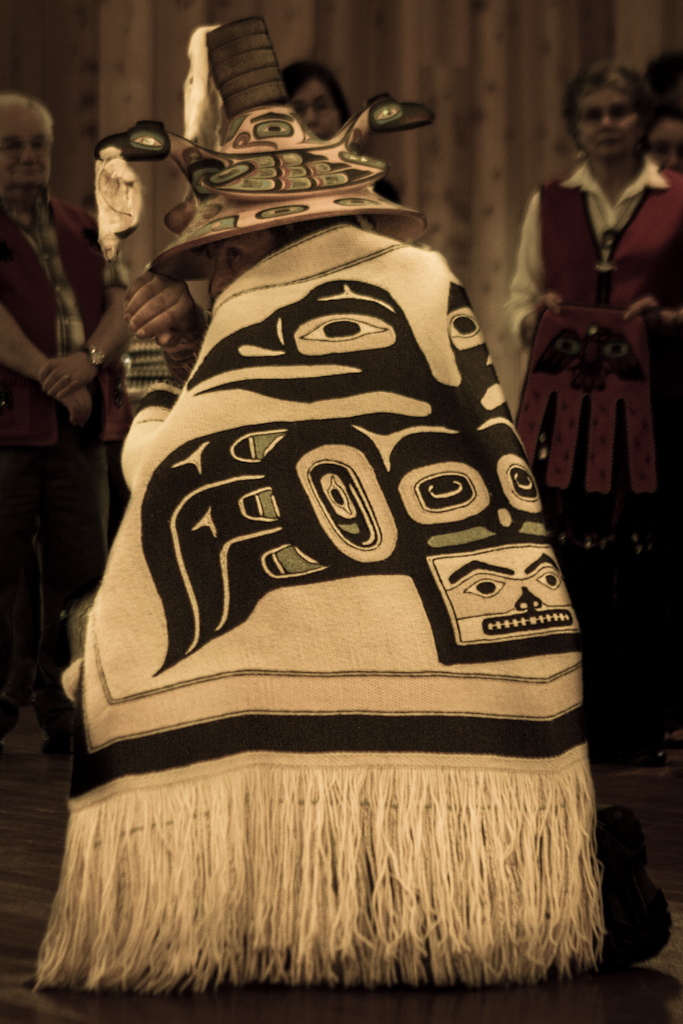
While dancing, singing, speech making, conducting protocols and gifting are the manners in which Koo.éex is executed, its structure is based around the principles of sharing and reciprocity. Originally, it was also often used as a tool to gain social status. Culturally, the social status of a clan or individual was based not on possessions, but on the capacity to give away and share. This principle was important for the redistribution and reciprocity of wealth, a strategy crucial for keeping good trading relationships with other clans. This aspect was contrary to, and totally clashed with the European Christian capitalist system. It was impossible for the colonists to comprehend how people could work so hard and then give everything away, almost bankrupting themselves in the process. This misunderstanding only reinforced their loathing of the indigenous culture. Today, although the grandeur of the Koo.éex has decreased, it is still an important ceremony and practiced amongst the First Nations of the Northwest Coast communities.
Rising From The Ashes
Tagish is a short drive east of Carcross, on Road 8, passed Chootla and Crag Lake. Sitting on the banks of the Six Mile River, the small community, whose name means “fish trap” in Athapaskan, was an important First Nation trading settlement, serving as a middle point between the coastal and inland peoples. Today, besides being a fishing heaven for Lake Trout, Arctic Grayling and Northern Pike, it is mostly known as, along with Carcross, one of the villages of Skookum Jim, Patsy Henderson and Dawson Charlie, all credited to having discovered the gold that led to the Klondike Gold Rush in the 1800’s.

Right after the Tagish River bridge, to the right, near the campground, is where, about one hundred years ago, the Dakl’ aweidi HÍt was turned to ashes. There are no ruins or remnants of any structure that could give clues as to its exact location, only rumors and memories. Besides the knowledge passed down from the great great parents, a very few accounts point to the existence of the building – “As mentioned, the nineteenth century Daql’awedi house at Tagish was called either kit hit or gotc Hit.” (McClellan, My Old People Say, 453.)
The Tagish clan house was burned down in a final and desperate attempt by the Anglicans to crush the Tlingit’s fighting spirit. On the premise that if you destroyed the “Indian’s Temple”, the “Natives” would be forced to let go, convert, and embrace a new god. But the spirit of these Kwáan (people/nation) that has lived for thousands of years managed to survived this last century. The walls of their clan house might have been reduced to dust, washed away by the rain and returned to the ground, but their identity, their Haa latseení (people’s strength – body, mind & spirit) never truly disappeared. Just like a dormant seed, waiting for the right time, nurtured by the soil and surrounding elements, gathering its forces before it re-flourished. Just like a dormant volcano, seemingly quiet and subdued, buried forever in a prison of rock, but when ready, will explode and no forces on earth will be able to stop it.

On a large patch of tall grass, surrounded by pines, through which the river can be seen flowing, two groups are facing each other. On one side, the Dakl’ aweidi clan, from the Wolf/Eagle moiety, and on the other, chiefs and representatives from the Raven moiety. The gentle breeze and warm northern summer sun are good omen an elder confines to me, “The Ancestors are here” she concludes. Everybody is dressed in full regalia. Some of the outfits have literally been taken out of museums especially for the occasion. One of them worn by a Raven Chief, is a 300-year old Chilkat blanket that is normally on display at the Alaska State Museum in Juneau. Another precious artifact, brought by a Killerwhale Chief in Juneau, is a Tlingit dagger. From around 1650 to 1700, the dagger was forged out of a meteorite by a man of the Dakl’ aweidi named Kucheesh (Dark Wolf). The display of priceless at.oow (a clan’s most prized collectively owned possession), more than a million US dollars in value, is a reminder to all of us present just how unique and important this event is.
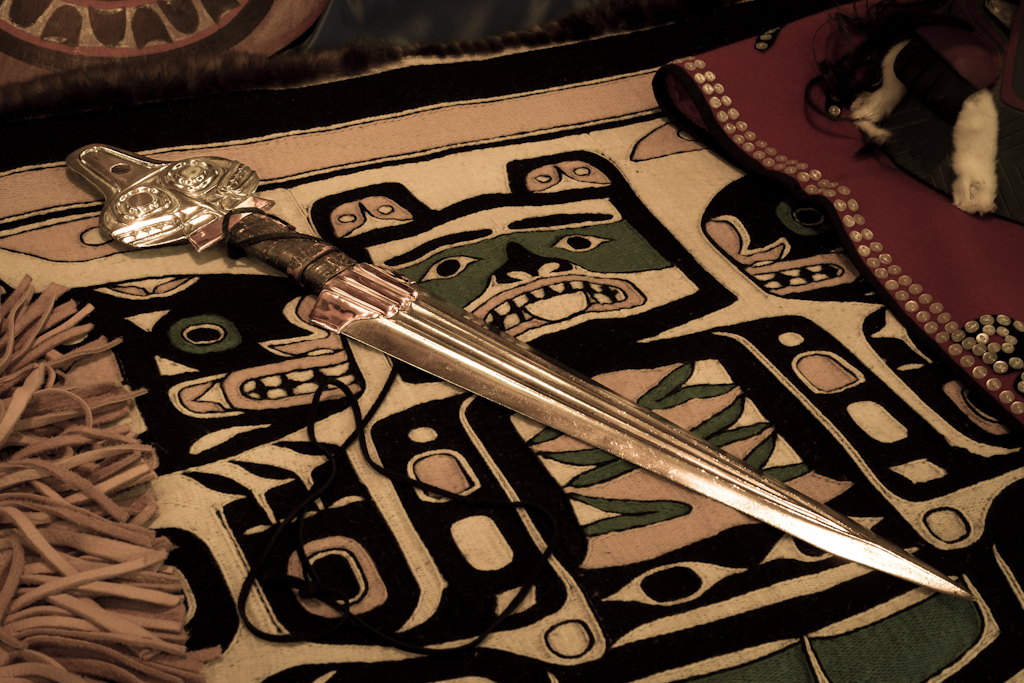
The ceremony is a series of exchanges and acknowledgements between the two moieties. The beauty and richness of the moment is not really about what is being said, but rather about what transpires. Everything revolves around the notions of respect, cooperation, honor, the care for the clan and the value put into the wisdom given by the Elders. The way they talk and address each other embodies these beliefs. As one of the Chiefs explained to me, whether by telling stories, or addressing the clan, talking is an act of reciprocity. There is an art to it. There is a rhythm, there are pauses and silences. There is a time to talk and a time to listen. There are times to ask and times to wait for an answer. You need to let your audience acknowledge what you are saying and let them participate. He confesses to me that this art is one of the most difficult ones to teach today and he is conscious on how hard it is for the younger generations who live in an exponentially fast world that is focused on the individual. He finds it hard to convince the young ones to emphasize the value of the clan and of the family while the society around them glamorizes self-indulgence, fame, and short-term gains. Right now however, to see these Elders, these Chiefs, conducting the ceremony and addressing each other with such respect is a treat. If only our own legislators and politicians did the same, I am sure that our world would certainly be in a better place…

As the sun disappears past the tip of the trees, two Dakl’ aweidi matriarchs take a shovel and break the ground, turning the sacred soil around several times. A chief comes and kneels, rumbling his finger through the dirt. He thanks the Ancestors, the ones who have lived, prospered and died on this land for several thousands of years. Then taking a handful of the earth, he stands up and goes around giving some to everyone. This is a moment of utmost importance, by binding the past with the future, with what was and what will be, and by uniting the dead with the living, a legacy is created.
As each holds in his or her hands a piece of that legacy, a dance begins. Gently bending their knees and bringing their robes and blankets to their faces, the dancers hide their bodies and force the audience to focus on the visual display produced by their regalia. On their heads are “naa s’aaxhwu”, clan hats made of woods and featuring intricate carvings of their clan and history. Dakl’ aweidi “naa s’aaxhwu” all bear the iconic killer whale dorsal fin and by slowly rocking their heads from side to side, with an upward then downward motion, they transform themselves into a pod of killer whales swimming the sounds of the northern pacific coast.

While the “killer whales” swim in a circle, on the very same ground where the clan house will be built, the rest of the group, one by one, sprinkles back the earth they had hold in their hands onto the Dakl’ aweidi dancers, this way connecting their ancestral coastal origins with their inland future.
As the ceremony comes to an end, final congratulations are made, handshakes are exchanged, and embraces are shared. Even though the sun has disappeared behind the mountains – the northern summer sky rarely gets dark before midnight, it has been a very long day and we are all starving. As if on cue, Marilyn announces that we are all to reconvene at her place for a real Tlingit feast!

A Time To Celebrate
Sitting on the banks of the Yukon River, in Whitehorse, the recently built Kwanlin Dün Cultural Centre, is one of four First Nations cultural centers in Yukon. Designed to honor the river and its people, the building is made up of a series of rooms linked together by a very long hallway, called the “River Corridor”. The front of the building is curved to illustrate the river’s sinuous flow while the off-white rock emulates the natural clay bluffs that are prominent throughout the river valley. Inside are several event rooms, conference rooms, cultural exhibits, an elder room and a spiritual sacred room. It is in the main room that today’s potlatch, a celebration for yesterday’s raising of the clan house, is being held.
Only 60 years ago, the ban on Potlatch was lifted. The Second World War had ended in 1945, yet the First Nations were still forbidden to celebrate their cultural heritage. In 1951, while the Americans and Canadians were busy watching Humphrey Bogart and Katharine Hepburn on the big screen, the First Nations celebrated the ratification of the Indian Act, making “attempts to pursue land claims and the use of religious ceremonies (such as potlatches) no longer prohibited by law”. For Marilyn’s mother, having grown up in an era of “prohibition”, these past couple of days have been like seeing the light at the end of the tunnel. After years of repression, years of subdued existence and much effort spent keeping a dying culture alive, her people are finally coming together once again, just like in the old days.

From two in the afternoon until midnight, and repeating the same manners witnessed yesterday, speeches are made, stories are sung, dances are performed, gifts are given, and clan names are appointed. Much like their people have done for thousands of years, these Inland Tlingit and Tagish are celebrating their cultural heritage and through it, acquiring the confidence needed to maintain its spirit and historical essence and assure its future.
Walking up to Marilyn, who is catching her breath after such a powerful entrance, I ask her if she ever thought it would come to this, as I point to the crowd, the dancers, the building, the chiefs from Alaska, her daughter who is dancing and her mother who is sitting still, overwhelmed by emotion. Trying to take everything in, she turns to me and I can see a tear lingering on the corner of her eyes. On her face, pride is radiating. This is not personal pride but rather the pride of a people that has finally found its promised land after such a long and treacherous journey.
“Thank you” she says to me. “I am really happy that you were here to see my family and learn more about our culture. It was an honor for us to have you with us.” Her modesty takes me by surprise and I insist that the honor is mine. I ask her if she thinks her grandmother would have been proud of this moment, and of her granddaughter. “She is, don’t worry. Very much so. She is here, along with our Ancestors. And they are really happy and proud of us!”
Goonaxcheesh!


Very well said, .. thank you.
Who is in the last picture?
[…] (Tlingit art) http://wildimageproject.com/2012/09/03/tlingit/ (regalia image. Great images on this site, definitely worth taking a look at.) […]
The Chilkat Blanket is a “Frog Coming Out of the Den” belonging to the Kiks.adi clan of Sitka; it is not from the “split tailed beaver clan.
Also it is tobacco being sprinkled on the Killerwhale Hat, not “sacred soil”. Sprinkling tobacco for killerwhales brings good luck.
Thank you Harold for the information. Much appreciated.